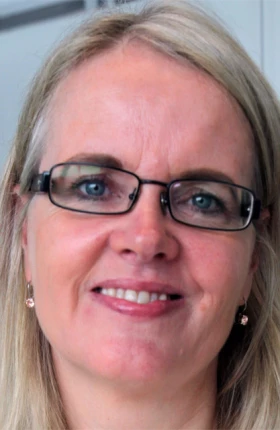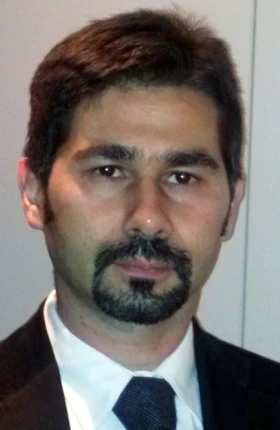“Mobility, digitization, big data, and analytical marketing have become important areas for investment.”
New technologies and new business models—everything from big data to IT services and digital content—are becoming increasingly important for telcos. But for their IT departments, so too are new approaches to how their job gets done. As Ahmet Zerey, CSI manager at Turkcell, tells BCG, the key is a close collaboration with the business units—and frequent tweaks to the game plan.
Turkcell has been broadening its business through its latest acquisitions, moving from a pure mobile play into new services like IT and Internet. How does this impact—and potentially present challenges to—the company’s IT strategy?
As an IT organization, it is crucial to align your own strategies with the company’s business strategy. In Turkcell’s case, our fixed-line operator—Turkcell Superonline—is becoming an increasingly important part of the business and accounting for more and more revenue. In such an environment—in which it is no longer about supporting a single type of business, such as pure mobile—the challenge is to ensure that IT processes are lean, mature, and flexible. One way we have been doing this is through a project to modernize our CRM and network management systems.
Turkcell has made significant investments in IT. What are your key areas of focus?
We have been very focused on boosting the flexibility of our core systems and processes. The evolving nature of Turkcell’s business—and IT’s need to support it—requires this. In 2013, for example, we made a very large investment in our Single Rating Engine project, in order to create and implement more flexible business logic. This is an area in which we anticipate further investment, as well. We have also been focusing on the modernization of our CRM and network management systems, as mentioned earlier. Finally, as one might expect these days, mobility, digitization, big data, and analytical marketing have become important areas for investment.
The TeBIT data suggests that external head count, degree of outsourcing, and (to a lesser degree) the service model all drive IT spending. What has been your experience regarding complexity drivers for your IT operating model?
We believe that the common approach to outsourcing—working with many different firms within a single business or technical area—drives complexity and cost, without necessarily driving performance. So in 2014, our strategy has been to consolidate outsourcing firms—getting down to a smaller, more optimal number of partners for a given area. We are already seeing that this approach brings financial benefits. We are also seeing that relying on fewer but larger outsourcing firms—instead of many smaller ones—also improves the work environment. Processes have been smoother and more successfully executed.
What do you see as the most important technology or investment trends for telcos in the coming years? Which IT trends do you embrace?
Big data is certainly a key trend—and an opportunity. In the past year, it has become a core strategy for us, and we are approaching it, and hoping to leverage it, on several levels. For one thing, we want to use our network data for analyzing, and improving, the customer experience. The idea is to gain insight that can help us increase our first contact resolution ratio. When call center agents speak with customers, they will be able to draw on a more complete, readily available view of that customer. They will know, immediately, the services and features the customer has, as well as any preferences and past issues. We also expect big data to enable richer analysis of user behavior. The result will not just be faster service, but better service.
How do you align with the business to ensure that IT provides high business value to the organization?
A close, collaborative relationship between IT and the business units is essential. There has to be continual interaction and a process that fosters this. For example, at Turkcell, the IT organization will sit down with the business units at the end of each year and decide on the IT strategies and roadmap to support each unit’s portfolio for the forthcoming year. But we do not end things there. Throughout that next year, there is constant interaction, with IT not simply following the roadmap but realigning it, if necessary, to adjust for any change in business strategy. Because sometimes strategies do change, and you have to stay on top of that and account for it. To ensure that this really happens, we have created roles, responsibilities, and processes across the organization. There is a structure to our interaction, and there is accountability, because when you have that, you have a much better chance of success.
How do you ensure innovation and the adoption of IT trends within your organization?
Turkcell Technology is one of the largest research and development companies in Turkey and customer-driven innovation is the most important strategy—and goal—we have. To achieve it, we strive to create an environment that encourages the generation and development of new ideas. When you have this kind of environment, your engineers not only understand the needs and expectations of your customers, but are empowered to meet—and exceed—them. You want to make sure your organization and your processes are designed to nurture and support innovation. Because innovation is everything. It helps you solve customers’ problems, it lets you enrich their lives, and it brings you a competitive advantage.
How would you summarize the challenges for telcos today?
In the majority of markets, telco revenues are declining, which makes the number-one challenge finding a way to compensate for these losses. We think the solution requires a two-pronged approach: moving to a lean operating model (in order to decrease costs) while investing in areas that can help grow revenues. This is certainly the route we are taking. Neither of those tasks is simple, of course, but telcos need to embrace them—carefully, wisely, and now.





